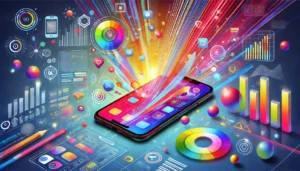In today’s digital world, interactivity has become an essential component of any successful event, whether in-person or virtual. This interactive dimension allows a passive audience to become engaged participants, promoting the exchange of ideas, collective creativity, and the optimization of the overall experience. But what do we mean by interactivity in the context of events, and why is it so crucial today?
Defining interactivity: more than just an exchange
In the context of events, interactivity refers to the participants’ ability to interact directly with the content, speakers, and other attendees. It goes far beyond mere listening or watching a presentation. It’s the opportunity for participants to ask questions, respond to live polls, participate in quizzes, or even share their thoughts in real time.
This interaction boosts engagement, stimulates interest, and creates a sense of active participation, whether at conferences, training sessions, webinars, or workshops.
Why is interactivity crucial for your events?
Strengthening participant engagement
When participants are invited to interact, they feel more involved in the event’s proceedings. This transforms a passive experience into a more dynamic and engaging activity. Interactivity helps maintain their attention, which is particularly important during long or content-heavy events.
Facilitating learning and information retention
Studies show that active interaction improves understanding and retention of information. Participating in quizzes or answering questions during a session not only consolidates knowledge but also allows immediate application of the concepts discussed. This is particularly useful in training and educational workshops.
Promoting networking and collaboration
Interactive events create opportunities for participants to connect and collaborate. Whether through group discussions, idea exchanges, or co-creation activities, interactivity stimulates networking, breaking down barriers between participants. This is particularly relevant in professional events where sharing experiences is key.
Obtaining real-time feedback
One of interactivity’s greatest strengths is the ability to receive immediate feedback. Whether evaluating sessions or gauging overall participant satisfaction, collecting this information on the spot allows organizers to adjust content, improve future sessions, and ensure a better user experience.
Creating an immersive and memorable experience
An interactive event isn’t just an informative event; it’s a whole experience. Participants remember an event where they were active and had the opportunity to express themselves or contribute. This fosters a memorable experience and encourages better loyalty for future events.
Different forms of interactivity during an event
Interactivity can take different forms, depending on the type of event and the objectives. Here are some common examples:
- Live Q&A : Participants ask questions to speakers in real time, allowing for rich and spontaneous exchanges.
- Live polls and voting : Ideal for gauging the audience’s pulse or getting their opinion on a specific topic. The results are displayed immediately, reinforcing collective involvement.
- Quizzes and challenges : To stimulate friendly competition and test participants’ knowledge, quizzes and interactive games are powerful tools for capturing attention.
- Small group discussions : Using breakout groups to encourage exchanges between participants and facilitate more targeted and constructive discussions.
- Real-time content sharing : Whether by adding photos, videos, or testimonials, real-time content sharing via platforms or internal social networks enriches the experience and encourages active participation.




